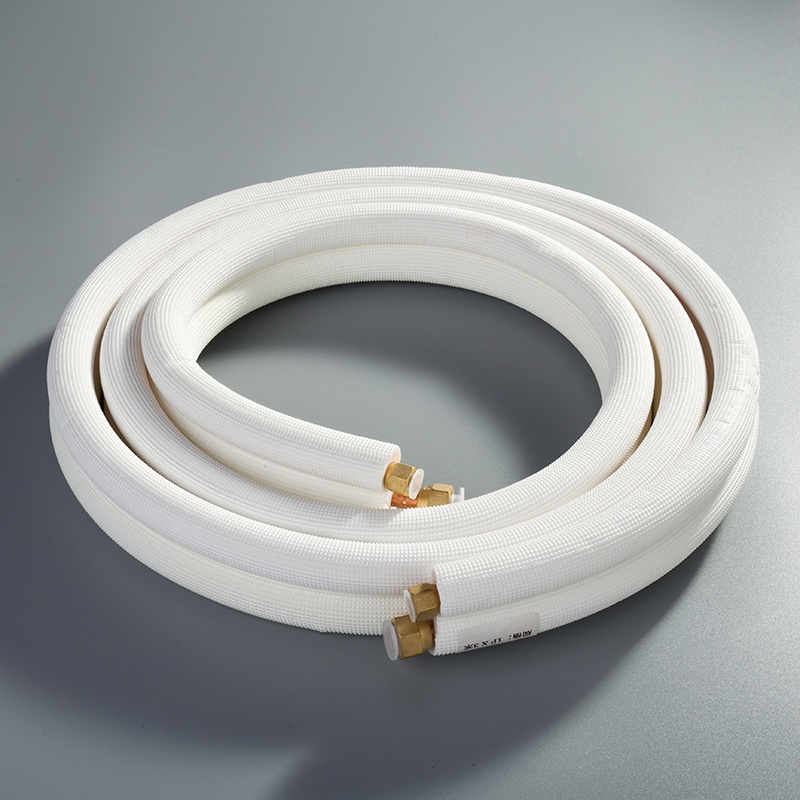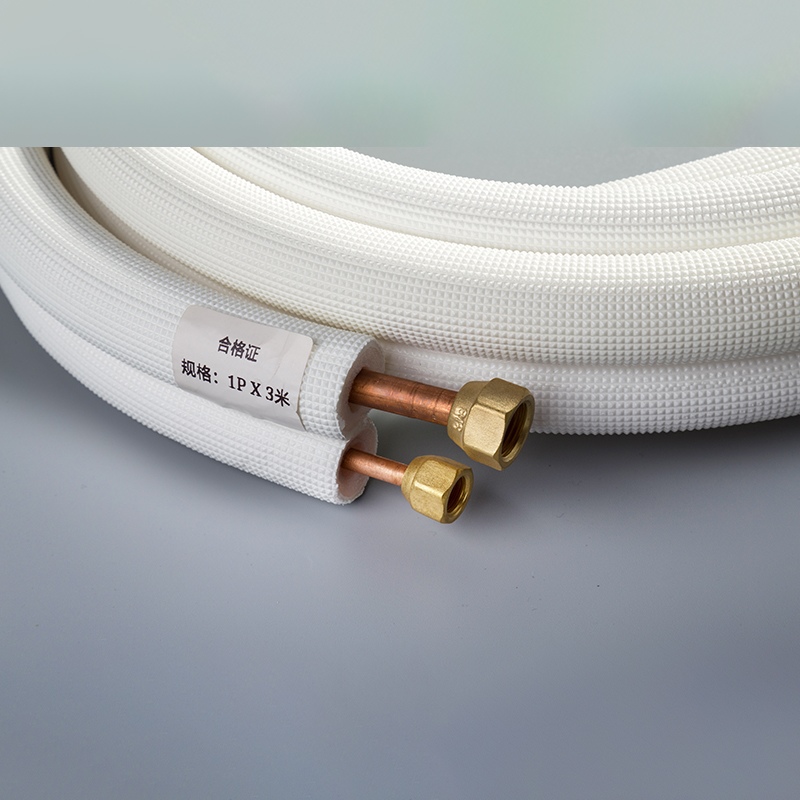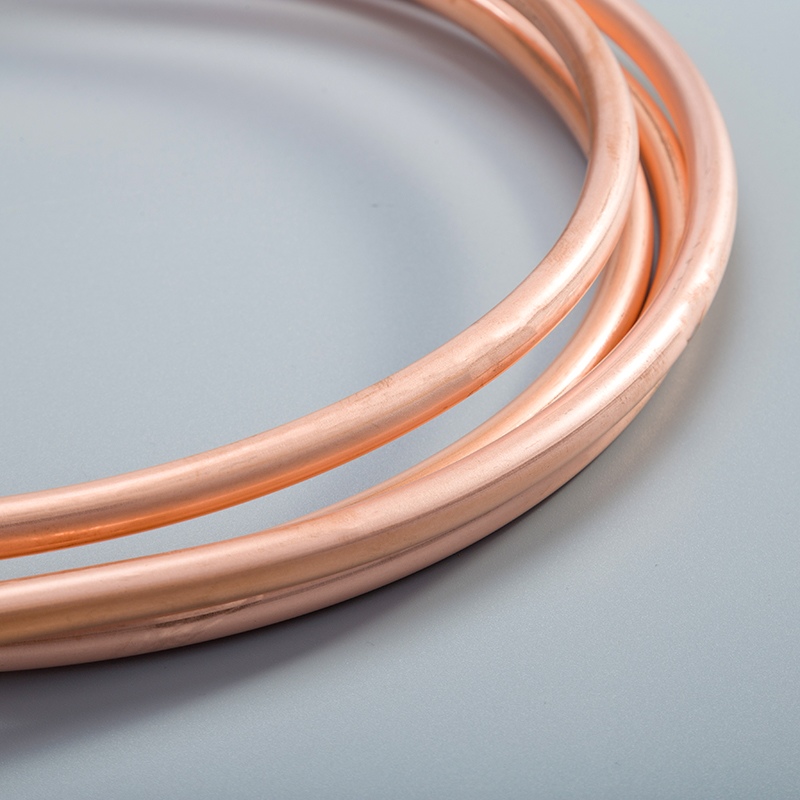5 Essential Copper Pipe Sizes Every Plumber Should Know

Understanding the importance of knowing copper pipe sizes is crucial for plumbing and water systems. Plumbers rely on the overview of the five essential sizes, such as 1/2 inch, 3/4 inch, and 1 inch copper pipe, to ensure efficient installations. Using the correct pipe size not only guarantees proper flow but also minimizes potential issues in plumbing systems. By referring to tools like the copper pipe diameter chart and copper pipe dimensions chart, plumbers can make accurate measurements for successful projects. Additionally, a copper pipe expander can be used to adjust the pipe size as needed.
Common Copper Pipe Sizes

1/2 Inch Copper Pipe
Copper pipe with a 1/2 inch diameter is commonly used in residential plumbing projects. Plumbers often rely on this size for various applications, including connecting fixtures like sinks and showers. The versatility of the 1/2 inch copper pipe allows for easy maneuvering through tight spaces, making it ideal for home installations. However, its smaller size can sometimes limit the flow rate in high-demand systems.
3/4 Inch Copper Pipe
For water supply lines in residential settings, the 3/4 inch copper pipe is a popular choice among plumbers. Its slightly larger diameter compared to the 1/2 inch pipe enables better water flow, especially in areas where higher volumes are required. When considering this size, plumbers must account for factors like pressure variations and potential corrosion risks to ensure long-term reliability.
1 Inch Copper Pipe
In larger plumbing systems or commercial applications, the 1 inch copper pipe plays a crucial role in maintaining consistent water pressure and flow rates. Plumbers often use this size for main supply lines or extensive networks where demand is substantial. While the increased capacity of the 1-inch pipe offers advantages in high-flow scenarios, it's essential to carefully plan installations to avoid unnecessary material waste.
Copper Pipe Diameter Chart
When referring to the Copper Pipe Diameter Chart, it is essential to understand how this tool can assist plumbers in selecting the appropriate pipe size for their projects. By examining the chart, professionals can identify the specific outside diameters of various copper pipes, such as 1/2 inch, 3/4 inch, and 1 inch. This information is crucial for determining compatibility with fittings and fixtures, ensuring a seamless plumbing system.
To effectively utilize the chart, plumbers should first locate the desired pipe size along the horizontal axis. Next, they can trace vertically to find corresponding measurements related to inner diameter and wall thickness. This detailed breakdown enables precise calculations for installations, guaranteeing optimal performance and longevity.
Understanding how to interpret and apply the Copper Pipe Diameter Chart empowers plumbers to make informed decisions based on project requirements. Whether working on residential or commercial systems, this tool serves as a valuable resource for achieving accurate and efficient plumbing solutions.
How to Use the Chart
Utilizing the Copper Pipe Diameter Chart involves a systematic approach that begins with identifying the intended application and water flow demands. By cross-referencing pipe sizes with required specifications, plumbers can confidently select the most suitable option for each project. Additionally, considering factors like pressure ratings and material compatibility ensures long-term reliability in plumbing systems.
Once the ideal pipe size is determined using the chart, plumbers can proceed with accurate measurements and precise cuts using tools like a copper tube fitting crimping tool. This step is crucial for achieving secure connections and preventing leaks or disruptions in water supply lines. By following industry standards and leveraging the insights provided by the chart, plumbers can streamline their workflow and deliver exceptional results.
Specialty Copper Pipe Sizes
15 mm Copper Pipe
Uses in Heating Systems
Ideal for small to medium heating systems where space is limited
Ensures efficient heat transfer due to its compact size
Commonly used in underfloor heating installations for uniform warmth distribution
Advantages and Limitations
Advantages:
Offers flexibility in routing, especially in confined areas
Resistant to corrosion, ensuring longevity of the system
Cost-effective solution for heating smaller spaces
Limitations:
Limited flow capacity compared to larger pipe sizes
Requires precise installation to prevent kinking or bending
Not suitable for high-demand heating applications
22 mm Copper Pipe
Applications in Hot Water Systems
Applications:
Used for transporting hot water efficiently in residential settings
Suitable for connecting water heaters and boilers due to its durability
Benefits and Drawbacks
Benefits:
Provides increased water flow compared to smaller pipes
Resistant to high temperatures, reducing the risk of damage
Drawbacks:
Bulkier than smaller pipe sizes, requiring more space for installation
Higher material cost compared to standard plumbing pipes
Micro Bore Copper Pipe
8 mm and 10 mm Sizes
Designed for intricate plumbing layouts where space is a constraint
Allows precise control over water distribution in compact systems
Commonly used in specialized applications like refrigeration units
Uses and Installation Tips
Uses:
Ideal for micro-bore systems requiring minimal water flow
Suitable for intricate designs where traditional pipes are impractical
Installation Tips:
Ensure proper insulation to prevent heat loss in small diameter pipes
Use specialized tools like tube cutters for clean and accurate cuts
Copper Pipe Expander
When considering the copper pipe expander, plumbers can appreciate its purpose and benefits in enhancing plumbing projects. The tool serves to resize copper pipes, allowing for seamless connections and efficient flow adjustments. By utilizing the expander, professionals can easily adapt pipe sizes to meet specific requirements, ensuring compatibility with various fixtures and fittings. This versatility minimizes the need for multiple pipe replacements, saving time and resources during installations.
How to Use an Expander
Start by selecting the appropriate expander size based on the desired pipe diameter adjustment.
Insert the expander into one end of the copper pipe and rotate it clockwise to expand the tubing evenly.
Ensure a smooth expansion process to maintain consistent wall thickness for optimal performance.
Test the newly expanded section for secure fittings before integrating it into the plumbing system.
Transitioning Between Pipe Types

Copper to PEX Connections
Using SharkBite Fittings
Plumbers often opt for SharkBite fittings when transitioning from copper to PEX pipes. These fittings offer a convenient solution for connecting different pipe types without the need for complex tools or soldering. The innovative design of SharkBite fittings allows for quick and secure installations, saving time and ensuring leak-free connections. By simply inserting the PEX pipe into the fitting, the sharp teeth inside grip onto the pipe securely, providing a reliable joint that withstands water pressure and temperature variations.
Benefits of Push-to-Connect Fittings
When considering transitioning between copper and PEX pipes, push-to-connect fittings present numerous advantages for plumbers. These fittings eliminate the traditional methods of soldering or gluing, streamlining the installation process significantly. With push-to-connect technology, plumbers can achieve watertight seals by pushing the pipes together firmly. This not only reduces labor time but also minimizes the risk of leaks in plumbing systems. Additionally, push-to-connect fittings are reusable, allowing for adjustments or reconfigurations with ease.
Copper to PVC Connections
Methods and Considerations
Transitioning from copper to PVC pipes requires careful planning and adherence to specific methods to ensure a successful connection. Plumbers can utilize transition fittings designed explicitly for joining these two distinct materials effectively. By following manufacturer guidelines and recommendations, professionals can select compatible transition fittings that guarantee a secure and durable joint between copper and PVC pipes. It is essential to consider factors like pipe diameter compatibility, solvent cement application techniques, and proper alignment during installation to prevent leaks or structural weaknesses in the connection.
Ensuring Secure Connections
To maintain the integrity of copper to PVC connections, plumbers must prioritize ensuring secure joints that withstand water pressure and environmental conditions. Thoroughly cleaning and preparing both pipe ends before assembly is crucial to promote strong adhesion between the materials. Applying an appropriate amount of solvent cement evenly around the joint ensures uniform coverage and bonding strength. After assembly, allowing sufficient curing time as per manufacturer instructions is vital for establishing a reliable connection that meets plumbing standards. Regular inspections post-installation can help identify any potential issues early on, ensuring long-term performance and functionality of copper to PVC transitions in plumbing systems.
Copper pipe sizes play a vital role in plumbing projects, ensuring optimal flow and efficiency. Remembering the five essential sizes—1/2 inch, 3/4 inch, 1 inch, 15 mm, and 22 mm—is key to successful installations. Utilizing tools like the Copper Pipe Diameter Chart and Copper Pipe Dimensions Chart guarantees accurate measurements for precise fittings. By understanding these sizes thoroughly, plumbers can enhance their work quality and streamline project timelines effectively. Embrace the benefits of mastering copper pipe sizes for seamless plumbing solutions.
Product Information:
IWS-1632AF: Capable of flame-free connections to copper press systems in under 5 seconds.
Copper Tube Fitting Crimping Tool: Compatible with Viega Copper, Pro-Press, Elkhart, and Conex Pipe Fittings.
See Also
Top 5 Tips for Handling Unusual 1/2' Copper Tubing
Key 5 Tips for Utilizing 1/4 Copper Tube Connectors
5 Essential Tools for Flaring Copper Pipes at Home


